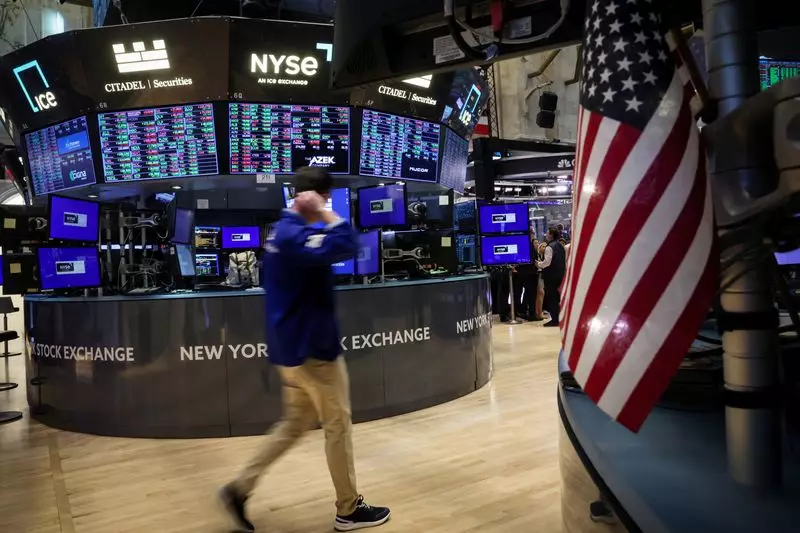As the closing bell rang last Friday, Wall Street witnessed a remarkable event: both the Dow Jones Industrial Average and the S&P 500 reached unprecedented closing highs. Accompanied by the Nasdaq’s positive performance, the stock market has shown extraordinary resilience and growth, primarily driven by outstanding earnings reports, particularly from Netflix. This marks an impressive streak, with all three significant stock indices securing their sixth consecutive weekly gains—the longest such streak since late 2023. Notably, the S&P 500 experienced a welcome 0.9% increase over the week, while the Nasdaq Composite and Dow Jones followed, gaining 0.8% and 1% respectively.
Netflix’s stock surged by an impressive 11.1%, a significant contributor to the communication services sector’s rise of 0.9%. The streaming giant not only surpassed Wall Street’s subscriber growth expectations but also confidently projected further increases in subscribers for the remainder of the year. This exuberance cascaded into other high-profile tech stocks, collectively termed the “Magnificent Seven,” which have largely propelled the stock market’s gains this year. For instance, Apple reported a notable uptick in new iPhone sales in China, prompting its stock to climb 1.2%. Similarly, Nvidia’s shares rose by 0.8% following a favorable price target adjustment by BofA Global Research.
The prevailing market sentiment is overwhelmingly positive, as emphasized by David Waddell, CEO of Waddell & Associates. He aptly described the situation as a “what’s not to like” market, highlighting an environment enriched by promising economic statistics and a general trend towards disinflation. On Friday, specific performance metrics revealed that the S&P 500 increased by 23.20 points, reaching a new high of 5,864.67. The Nasdaq Composite advanced by 115.94 points, bringing it to 18,489.55, while the Dow Jones climbed modestly by 36.86 points to a record closing figure of 43,275.91.
While financial companies have largely delivered positive earnings, the sector saw some conflicting signals. Despite the general trend, American Express faced backlash after announcing quarterly revenues that missed expectations, resulting in a 3.1% drop in its stock. This singular instance did not diminish the overall upward trajectory for the financial sector; however, it emphasizes the volatile nature of market performance, driven by earnings fluctuations and the nuances of corporate performance.
Despite the euphoria highlighted by record-setting benchmarks, some concerns linger regarding overall market valuations. For instance, the S&P 500 is currently trading at nearly 22 times forward earnings—a figure that some analysts argue indicates inflated valuations. Expectations around upcoming corporate results coupled with potential volatility linked to the U.S. presidential election on November 5 present an ongoing risk to sustained market growth. Nevertheless, Waddell’s insights suggest that if corporate earnings remain robust, they may counterbalance apprehensions linked to potential political instability and overextensions in stock pricing.
Interestingly, small-cap stocks have recently garnered attention from investors, with both the Russell 2000 and S&P Small Cap 600 indices showing strong performance relative to their larger counterparts for the week. Despite experiencing a slight downturn last Friday, these small-cap indices reflect an increasing willingness among investors to diversify and explore opportunities beyond larger, more established companies.
Amidst the overall positive market trends, the energy sector stood out as a disappointing performer. A 0.4% fall, primarily influenced by declining oil prices and specific poor earnings reports—particularly a 4.7% decline in SLB—highlighted vulnerabilities in this sector. The broader energy index suffered a hefty drop of 2.6% during the week, attributed to emerging concerns regarding demand, specifically from China, as well as geopolitical tensions in the Middle East.
As the market absorbs these developments, it is essential to keep an eye on corporate earnings and economic dynamics that shape investor sentiment. With Friday’s trading volume reaching 10.62 billion shares, it is clear that the market remains active, albeit with caution regarding sector-specific performances. The interplay between optimistic earnings, potential political upheaval, and ongoing economic challenges will be crucial in determining whether the current record highs are a sustainable reality or a precursor to volatility. As we navigate this complex landscape, the potential for both significant gains and unforeseen setbacks looms large, highlighting the need for diligent observation of upcoming corporate earnings reports and economic indicators in the coming weeks.

